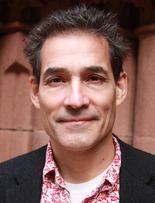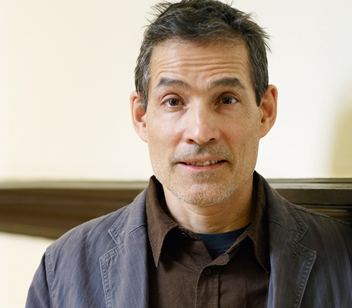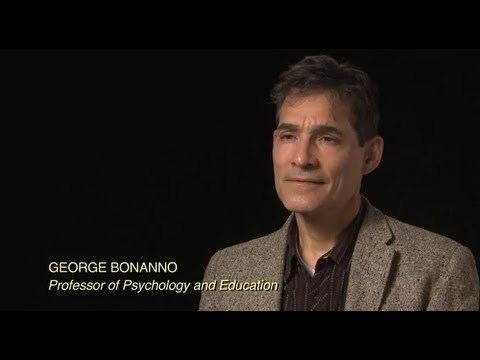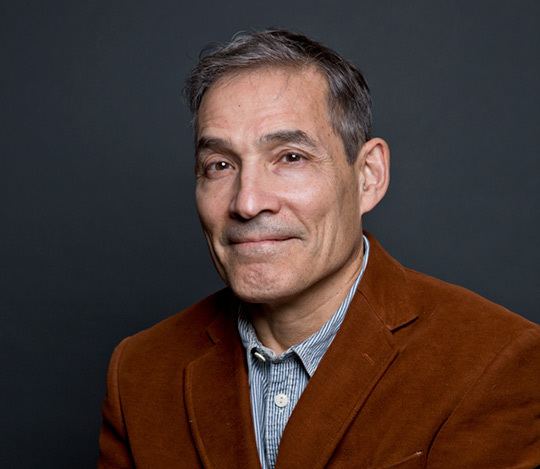Nationality USA | Role Professor Name George Bonanno | |
 | ||
Institutions Columbia UniversityTeachers College Alma mater Hampshire CollegeYale University Known for The Idea of Resilience. Resilience Defines the Experience of Human Loss and TraumaThe Science of Bereavement and TraumaThe Four Trajectories of GriefCoining the term "Coping Ugly"The Other Side of Sadness: What the New Science of Bereavement Tells Us About Life After Loss Books The Other Side of Sadness: What the New Science of Bereavement Tells Us about Life After Loss Education Yale University, Hampshire College | ||
Residence United States of America | ||
George bonanno measuring human resilience
George A. Bonanno is a professor of clinical psychology at Teachers College, Columbia University, U.S.A. He is responsible for introducing the controversial idea of resilience to the study of loss and trauma. He is known as a pioneering researcher in the field of bereavement and trauma. The New York Times on February 15, 2011, stated that the current science of bereavement has been "driven primarily" by Bonanno. Scientific American summarized a main finding of his work, "The ability to rebound remains the norm throughout adult life."
Contents
- George bonanno measuring human resilience
- George bonanno on the value of grief and grieving
- Contributions to the field
- Resilience
- Four trajectories of grief and trauma reactions
- Coping ugly
- Scientific study of grief
- Research methodology
- Criticism
- Personal life
- References

An article in Lingua Franca described Bonanno as resembling "the Grim Reaper himself, albeit in tanned, rested form."

George bonanno on the value of grief and grieving
Contributions to the field

Bonanno's contributions to the field, summarized in his book, "The Other Side of Sadness: What the New Science of Bereavement Tells Us About Life After a Loss," include the following:

Resilience
Bonanno's research found psychological resilience to be at the core of human grief and trauma reactions. Bonanno's finding of resilience overturns what has been the status quo assumption of a person's experience of grief and trauma in the West since Sigmund Freud nearly a century ago. Bonanno's contribution to the field is to have found resilience through rigorous research and not through anecdotal evidence, theorizing, or simple but unreliable methodology.
Controversy. Many in the field of bereavement have found Bonanno's finding of persistent resilience in the face of potentially traumatic events controversial. Many therapists and psychiatrists, who tend to treat the chronically affected, find it hard to imagine that no treatment is needed for most people who have experienced a loss or even an extreme stressor event, such as during 9-11 or childhood sexual abuse. Further, in contrast to Freud's and his followers' ideas and prevailing popular theories, it is difficult for many people to accept laughter as a healthy response. Another difficult concept, especially in the face a potentially traumatic event when people feel pulled to help in some way, is to realize that offering treatment to otherwise well people can cause harm, by producing the symptoms they hope to avoid.
Other critics have claimed the opposite, that far from being misguided, the idea that humans are resilient is so obvious that it is simplistic. Others have countered that it may seem simple, but the idea has escaped researchers for the century between Freud's work and Bonanno's. Policy and treatment for the past century has relied on the false idea that humans are not resilient, a costly mistake in human and monetary terms.
Resilience Overturns Stages Model. That people are resilient even when facing extreme stressors or losses contradicts the stages model of grief. Many resilient people show no grief. They therefore have no stages of grief to pass through. Until Bonanno, therapists and psychiatrists considered the absence of grief a pathology to be feared, rather than a healthy outcome.
Importance of Resilience. Resilience has profound implications for people's concepts of themselves, especially after suffering a severe stressor event. The idea also has important implication for how the therapeutic community thinks of bereavement and treats bereavement. Bonanno's research has shown that universal counseling by grief counselors after potentially traumatic events does more harm than good. Resilience being an inherent part of human experience after major stressor events also may have important implications for public policy, such as how to best treat veterans who have served in war situations and whether to counsel large populations after major stressor events, such as tsunamis or mass shootings.
Four trajectories of grief and trauma reactions
In 2002 and 2004, Bonanno described the four most common trajectories of grief or potential trauma. This research was based on longitudinal data beginning prior to the loss. In subsequent studies, Bonanno and colleagues identified the same trajectories following other potentially traumatic events, such as the September 11th Terrorist Attack in New York and the SARS epidemic in Hong Kong. Contrary to common assumptions about loss and trauma, Bonanno’s research may indicate that resilience is the most common pattern and that delayed reactions are rare.
The four trajectories and the percentages of people who tend to fall into each category are summarized and expanded upon in his book, The Other Side of Sadness: What the New Science of Bereavement Tells Us About Life After a Loss, The book also includes graphs of the trajectories.
The four trajectories are as follows:
Coping ugly
Bonanno coined the phrase "coping ugly" to describe his finding that grief and coping with grief take many forms. Behaviors that may not be healthy ordinarily may be helpful in times of stress, such as self-serving biases.
Scientific study of grief
Before Bonanno's work, a prevailing idea was that grief cannot be quantified or studied in a scientifically meaningful way. Bonanno forcefully argued early that scientific study of grief was possible.
The attitude of the field before Bonanno could be summarized by Tom Golden, a prominent bereavement expert who specializes in male grief. He said in 1997, “People who are grieving think that researchers are full of crap—and part of me says, I’m with you. We don’t have the tools to measure it yet, there’s no grieve-o-meter. We need to develop a sense of not knowing.”
“I think that’s a ridiculous statement" Bonanno said, heatedly in 1997 in response to Tom Golden's remark. “You can measure grief. People want to take a magical, mystical perspective, but it’s very dangerous to assume that they have access to a sacred realm that research can’t touch, relying only on their own observations, feelings, and thoughts—things that are very unreliable.” This sort of clinical criticism, he argued, is the result of a simplistic attachment to individual patients’ life stories. “The criticism I most often hear is, ‘Your research is very bad, because I have a patient who feels such and such.’ Well, I’ve studied hundreds of people.”
Research methodology
Bonanno conducted multi-cultural research into grief and trauma, including studies in Nanjing, China; among war survivors in Bosnia-Herzegovina; and in Israel. He has done multi-dimensional studies of emotion regulation, stressful life events, resilience, and adjustment among college students; a study of emotion and well-being among survivors of childhood sexual abuse (in collaboration with researchers at NIH); and several recent studies of resilience and adjustment in the aftermath of the September 11th terrorist attacks in New York City (funded by the National Science Foundation).
Rigorous Methodology: The fields of bereavement and trauma research rely often on simple measures, such as self-report questionnaires. Self-report measures are simple and inexpensive to give, but are unreliable for several reasons. Of concern to the fields of grief and trauma, self-report measures are biased by how the subject feels at the moment he or she answers the questionnaire. If the subject feels bad at the time of answering the questionnaire, the subject will remember the loss as more devastating. If the subject feels good when taking the questionnaire, the subject will report that the loss was less difficult to endure. This subjectivity can change rapidly.
Recognizing that any single simple measure cannot be accurate, one hallmark of Bonanno's research methodology has relied on several independent measures simultaneously. This ensures convergent validity of any findings. For example, his research studies often simultaneously use, among other measures, skin temperature, heart rate, the Facial Action Coding System or "FACS" pioneered by Paul Ekman, empty chair studies, longitudinal measures over months or years, cortisol, physician and friend reports, and Stroop tests.
In addition, he is known for developing new research techniques, such as a measure of ambivalence and the "empty chair" study with researcher Nigel Field.
Criticism
James W. Pennebaker's findings, very well supported by data, directly contradict Bonanno's claims on the harmful effects of retrieving bad experiences. One possible explanation and attempt to reconcile this seeming contradiction is the method for retrieving or reviewing bad memories. Pennabaker is known for his pioneering work in writing therapy. It may be that there's something about writing, rather than expressively crying in public, for one example, that helps rather than hurts a person's outcome. Writing may help preserve social bonds, which are crucial to maintain for good outcomes after a loss.
Personal life
George Bonanno lives in New York, NY with his wife, Paulette Roberts, and their two children.
